Garmin Edge bike computers are one of the most popular choices for cyclists to navigate, record their rides and train more scientifically.
Over time, Garmin has upgraded the capabilities of its GPS bike computers. Advanced tech has trickled down to all but its entry-level models.
So what does the Garmin Edge range offer and which head unit is right for you?
Editor's note: this list was updated on 10 September 2025 with the latest Garmin bike computers, including the Edge 550, Edge 850 and Edge MTB.
Garmin Edge range explained

The Garmin Edge range starts with the basic models that feature a simple black-and-white screen. Moving up the range gets you increasingly larger devices with larger-format colour touchscreens and more training data available. That said, even the base models have a lot of Garmin’s features included.
As well as offering standalone computers, Garmin also sells bundles for each Edge model.
These package up the Edge computer with other kit, such as a sensor bundle, which adds a heart rate monitor strap, and speed and cadence sensors.
Garmin has recently done some housekeeping on its Edge range, discontinuing some older longstanding models, so you might not see some familiar names below.
We’ll start with the simplest, most affordable Garmin Edge computers, and work up from there.
Current Garmin Edge models
Garmin Edge 130 Plus
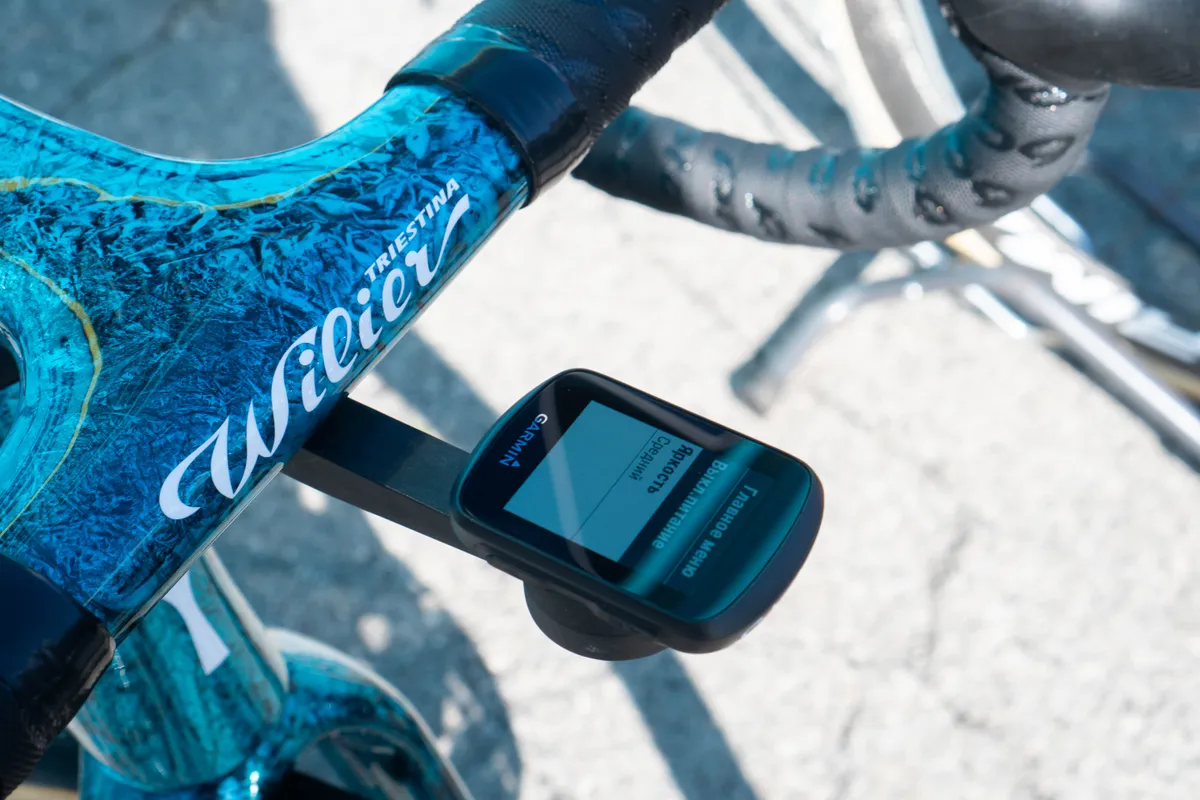
- Navigation: Basic, breadcrumb-style with no basemap
- Training data: Basic speed, distance, time, elevation, heart rate and power data field, mountain bike metrics and ClimbPro
- Connectivity: USB, ANT+, Bluetooth
- Compatibility: ANT+, Garmin Varia, Connect IQ
- Size: 40×62×17mm
- Screen: 27×36mm, black and white
- Price: £169.99 / $199.99 / €199.99 / AU$349
Garmin's most basic computer, the Edge 130 Plus has an accelerometer. This enables it to include mountain biking metrics and incident detection. ClimbPro shows the profile of a climb from a pre-loaded route.
There is no base mapping on the 130, so you're limited to breadcrumb mapping, but the screen resolution is sharp.
Battery life is just 12 hours, but that should be more than enough for most riders. The Edge 130 Plus can also control smart trainers.
- Best for: Riders who want a simple GPS with plenty of features, including mountain bike metrics
SQUIRREL_13084371
Garmin Edge Explore 2
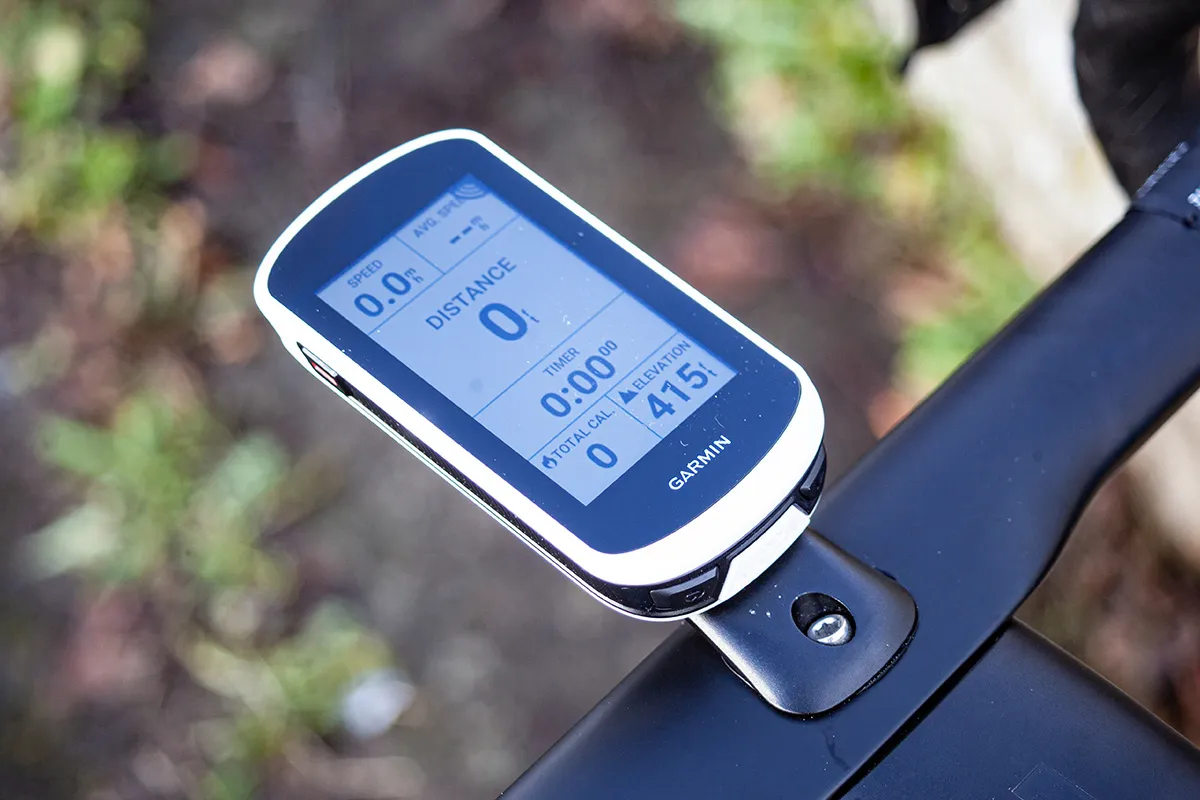
- Navigation: Excellent, thanks to trifold GPS, GLONASS and Galileo satellite input, this Garmin is adept at exploring; it can store 100 routes
- Training data: Speed, distance, time, ClimbPro, heart rate, power, but not advanced metrics such as left-right balance or training load
- Connectivity: USB-C, ANT+, Bluetooth
- Compatibility: ANT+, Garmin Varia, smart trainer and power meter
- Size: 106.1x55.7x20.6mm
- Screen: 3in, 240x400 pixels colour and touchscreen
- Price: £250 / $299 / €299 as tested
The Garmin Edge Explore 2 has better navigation features than some of Garmin's deluxe models at less than half the price. The screen is large, high-resolution and rerouting is reliable.
Connectivity options abound, but you lose out on the geekier training analysis, including pedalling efficiency, that its pricier Garmin brethren deliver. The live data the Edge Explore 2 does deliver will satisfy the majority of riders though.
Lacking WiFi connectivity, the Edge Explore 2 cannot directly upload your activities to Strava or other ride-sharing apps when you get home. Nor is it compatible with electronic groupsets.
- Best for: Riders looking for a large computer for navigation and who aren't too bothered about performance metrics.
SQUIRREL_13079802
Garmin Edge 550
SQUIRREL_TEXT_13327119

- Navigation: Multi-band GNSS, including GPS, GLONASS and Galileo; colour screen for map reading
- Training data: Speed, altitude, power, heart rate, cadence, calories, gear selection (for electronic drivetrains), distance, time, temperature, performance monitoring
- Connectivity: USB-C, Bluetooth, ANT+, WiFi
- Compatibility: ANT+ shifting, power meter and smart trainer, heart rate monitor, Shimano Di2, Vector power meter, Garmin Varia and VIRB
- Size: 54.6x92.2x16.8mm
- Screen: 2.7in (68.58mm) diagonal, 420x600 pixels, colour non-touchscreen
- Price: £379.99
Garmin's Edge 550 replaces the Edge 540 and Edge 540 Solar as the brand's premium touchscreen-free offering.
The Edge 550 comes with Garmin's Cycling Coach plan accessed through the Garmin Connect app. The plan is said to "adapt based on specific course demands and the rider’s training and recovery, providing recommended training adjustments”.
Garmin says the Edge 550 has a 12-hour battery life in demanding conditions, and up to 36 hours in battery saver mode.
Like the Edge MTB, the Edge 550 also receives MTB-specific Activity Profiles, including Enduro and Downhill MTB.
- Best for: Riders looking for sophisticated tech in a small package and who don't need a touchscreen.
SQUIRREL_13327119
Garmin Edge 850
SQUIRREL_TEXT_13327122

- Navigation: Multi-band GNSS, including GPS, GLONASS and Galileo; touchscreen for easy map navigation
- Training data: Speed, altitude, power, heart rate, cadence, calories, gear selection (for electronic drivetrains), distance, time, temperature, performance monitoring
- Connectivity: USB-C, Bluetooth, ANT+, WiFi
- Compatibility: ANT+ shifting, power meter and smart trainer, heart rate monitor, Shimano Di2, Vector power meter, Garmin Varia and VIRB
- Size: 54.6x92.2x16.8mm
- Screen: 2.7in (68.58mm) diagonal, 420x600 pixels, colour touchscreen
- Price: £469.99 / $599.99
Garmin's Edge 850 replaces the Edge 840, with the latest computer featuring a brighter screen than the previous model and greater training insights.
Like the Edge 550, the Edge 850 comes with access to Garmin's Cycling Coach plans.
The Edge 850 also features a speaker, similar to the 1050, that enables the computer to act as an alarm when parked or as a bike bell when on the road.
Its touchscreen makes navigating menus and the map easier, with pinch zoom and panning similar to that on a smartphone.
Garmin says the Edge 850 has a 12-hour battery life in demanding conditions, and up to 36 hours in battery saver mode.
The Edge 850 supports contactless payments, so you can pay for your coffee if you forget your wallet.
- Best for: Riders looking for a training-orientated companion that also has a focus on navigation.
SQUIRREL_13327122
Garmin Edge 1040 and 1040 Solar
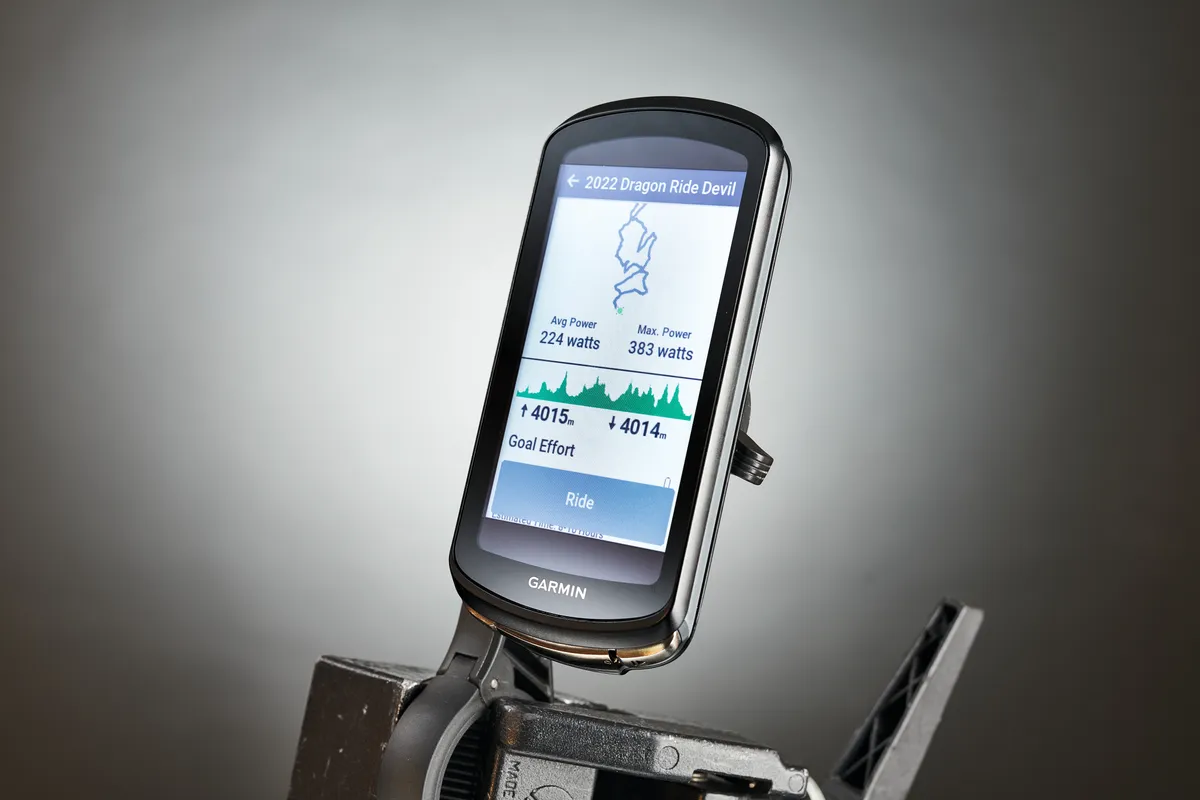
- Navigation: Every bit as good as the 1030 Plus with a faster processor for quicker route recalculation
- Training data: A bewildering number of training metrics that can be customised to your heart's content
- Connectivity: ANT+, Bluetooth, WiFi, USB-C
- Compatibility: ANT+, Shimano Di2, SRAM eTap, Campagnolo EPS, Garmin Varia
- Size: 59x118x20mm
- Screen: 3.5in/89mm colour touchscreen, 282x470 pixels
- Price (Garmin Edge 1040): £519.99 / $599.99 / €599.99 / AU$999.99
- Price (Garmin Edge 1040 Solar): £629.99 / $749.99 / €749.99 / AU$1,299 as tested
Second on the Garmin Edge tree, the Edge 1040 and 1040 Solar give you every feature you could ever want in a bike computer in the same overall format as the Edge 1030 Plus.
The 1040 Solar is said to run for up to 100 hours by recharging with sunlight on the go, using the same Power Glass technology as found on its top-end smartwatches.
Compared to the 1030 Plus, the 1040 is claimed to offer improved GPS and more data analytics while riding.
The ride settings on the 1040 models can be adjusted via the Garmin Connect app – a feature long requested by users.
- Best for: Riders looking for a large display for navigation and plenty of training features.
SQUIRREL_13076478
Garmin Edge 1050

- Navigation: Updated on-device route planning and easy toggling between overlays
- Training data: More training metrics than you will ever know what to do with
- Connectivity: ANT+, Bluetooth, WiFi, USB-C
- Compatibility: ANT+, Shimano Di2, SRAM eTap, Campagnolo EPS, Garmin Varia
- Size: 60.2x118.5x16.3mm
- Screen: 3.5in/89mm colour touchscreen, 480x800 pixels
- Price: £649.99 / $699.99 / €699.99 / AU$TBA
At the top of the tree, the new Edge 1050 is claimed to be Garmin's “brightest and smartest” bike computer yet.
With nearly double the resolution of the 1040, the biggest upgrade is to the screen, although this comes at the cost of battery life, which drops to a still chunky 20 hours for the 1050.
Other new features include in-ride hazard alerts, leaderboards and “witty post-ride awards”.
Curiously, no solar charging version is available yet.
- Best for: Dedicated cyclists who want every metric under the sun (but can do without solar charging)
SQUIRREL_13086848
Garmin Edge MTB
SQUIRREL_TEXT_13327112

- Navigation: Multi-band GNSS, including GPS, GLONASS and Galileo; colour screen for map reading
- Training data: Speed, altitude, power, heart rate, cadence, calories, gear selection (for electronic drivetrains), distance, time, temperature, performance monitoring
- Connectivity: USB-C, Bluetooth, ANT+, WiFi
- Compatibility: ANT+ shifting, power meter and smart trainer, heart rate monitor, Shimano Di2, Vector power meter, Garmin Varia and VIRB
- Size: 50.4 x 77.8 x 19.8mm
- Screen: 2.13in (54.1mm) diagonal, 240x320 pixels, colour non-touchscreen
- Price: £339.99 / $399.99 / €399.99
The Edge MTB is Garmin's first MTB-specific bike computer, with a rubberised exterior and Gorilla Glass helping it stay robust against trail abuse.
It was the first model to feature the Enduro and Downhill MTB Activity Profiles, and enables you to set timing gates down trails to see how fast you are through segments.
The computer also has road training features, making it a viable option for those looking for a do-it-all computer – albeit with a small screen.
Trailforks insight is built into the mapping, giving you a look ahead at what's to come on the trail.
Garmin says the Edge MTB is built with long riding days in mind, with up to 14 hours of battery life in demanding use cases – or up to 26 hours in battery saver mode.
- Best for: Those looking for a rugged computer ready for the trails
SQUIRREL_13327112
What can a Garmin GPS computer do?
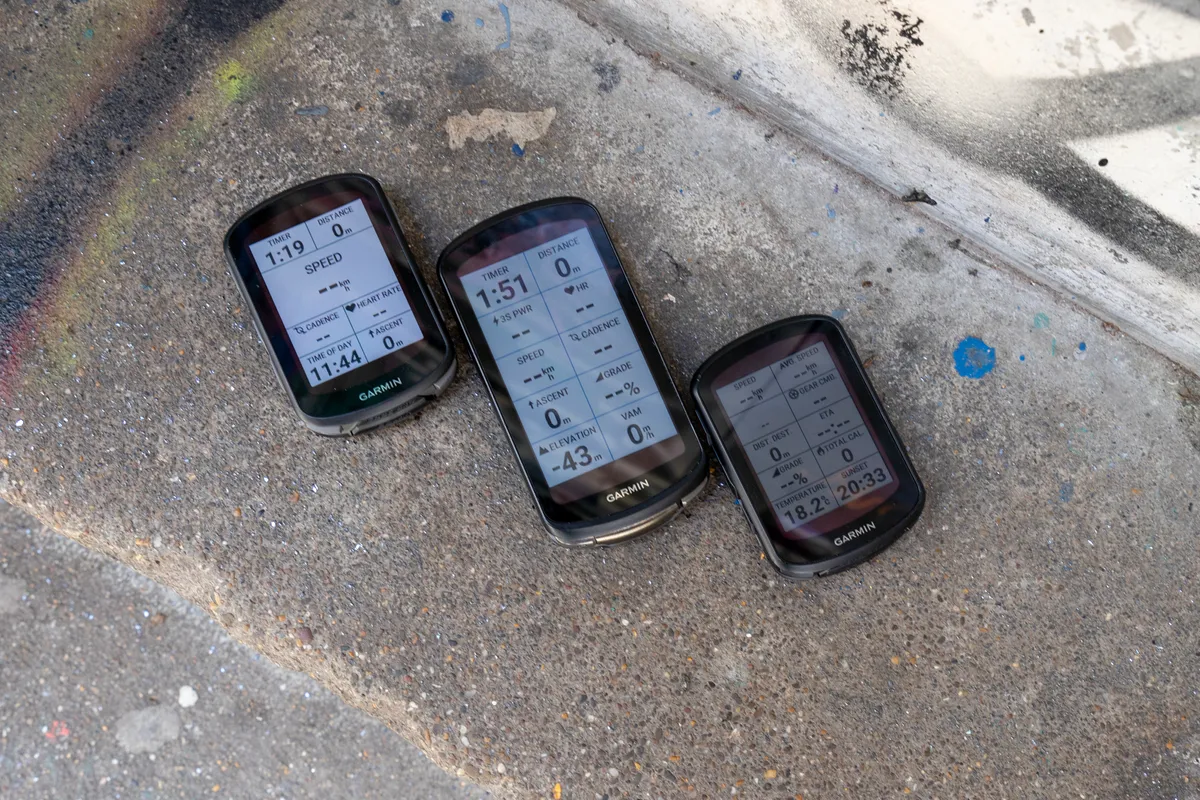
At a bare minimum, Garmin bike computers use GPS tracking to log where you’ve been, how far and how fast.
They get position data from the GLONASS, Galileo and standard GPS satellite constellations.
That basic data can be augmented with a raft of extras.
Most computers will give you mapping, enabling you to plan and follow a route, with turn-by-turn navigation. Their ability to re-route if you willingly or unwillingly go off track has greatly improved.
Cheaper models have just a breadcrumb trail that doesn’t superimpose your route on a base map.
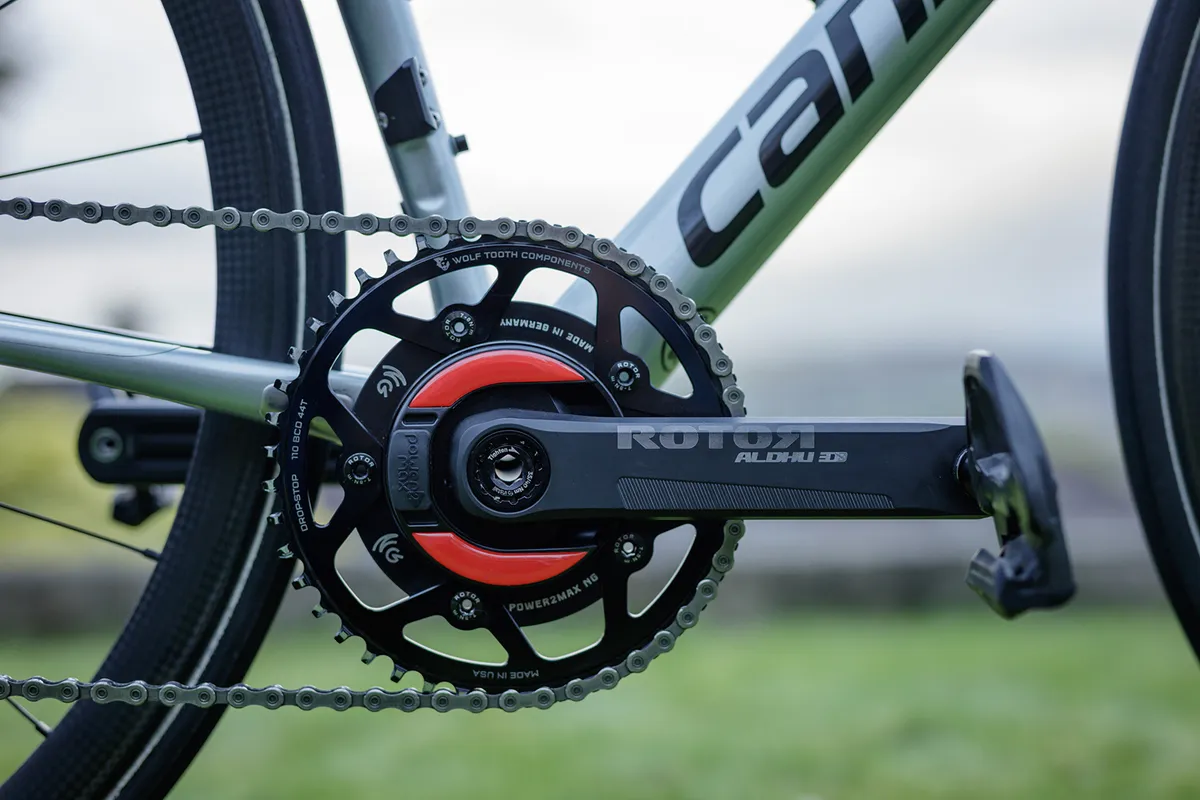
You can also pair your computer wirelessly with peripheral devices such as a heart rate monitor strap, speed and cadence sensors and a power meter to get more information on your performance.
Entry-level Edge models are controlled using buttons on the sides of the unit, whereas more expensive ones include a touchscreen.
The screen gets larger and sharper as you move up the range too, and goes from black-and-white to a colour display.

All Garmin Edge computers enable you to control Garmin’s Varia front and rearview radar lights, with the rear-facing units using radar to alert you via your computer of approaching vehicles.
The computers link to the Garmin Connect web or smartphone app, where you can view and analyse your data and plan routes.
The smartphone app enables you to pair your Edge to your mobile, and they will 'talk' to one another, with the computer showing you notifications of incoming calls and texts. The app can also share your position and other metrics with other riders and family at home.
Free-to-download apps in Connect IQ store enable you to personalise your Edge with, for example, a wind direction indicator. Integration with route planning and tracking apps, such as Strava or Komoot, are also available.
Discontinued Garmin Edge bike computer models
Here’s a full list of discontinued Garmin Edge models as of July 2024:
- Garmin Edge 20 review
- Garmin Edge 25 review
- Garmin Edge 130 review
- Garmin Edge 200 review
- Garmin Edge 205
- Garmin Edge 305 review
- Garmin Edge 500 review
- Garmin Edge 510 review
- Garmin Edge 520 review
- Garmin Edge 520 Plus review
- Garmin Edge 530
- Garmin Edge 540
- Garmin Edge 540 Solar
- Garmin Edge 605
- Garmin Edge 705 review
- Garmin Edge 800 review
- Garmin Edge 810 review
- Garmin Edge 820 review
- Garmin Edge Explore 820 review
- Garmin Edge 830
- Garmin Edge 840
- Garmin Edge 840 Solar
- Garmin Edge 1000 review
- Garmin Edge Explore 1000 review
- Garmin Edge 1030 review
- Garmin Edge 1030 Plus
Are there other options to consider?

Whereas five years ago, a bike computer was a Garmin, there are now alternatives. It's not all about Wahoo vs Garmin either.
Some of the best bike computers we've recently reviewed come from rivals to the big two. For example, we rated the Hammerhead Karoo 2 as highly as the Garmin Edge 1040 Solar and it costs half as much (though note its been superseded by the Karoo 3). For even less money, consider the high-scoring Sigma ROX 11.1 Evo.
You can also get a lot of the functionality of a bike computer in a GPS watch/smartwatch, with more versatility if you’re into other sports besides cycling.
Garmin has a comprehensive range, but other quality options we've tested include the Coros Pace 2 and Polar Ignite GPS fitness smartwatch.




